One Share (ONS) Risk Calculator
Token Overview
One Share (ONS) is an ERC-20 token on the Ethereum blockchain with limited liquidity and unclear tokenomics.
Risk Assessment Parameters
Calculated Risk Level
Adjust the sliders above and click "Calculate Risk Level" to see the risk assessment for One Share (ONS).
Ever stumbled across a crypto token that shows up on a few charts, has a wild price swing, and then disappears as quickly as it arrived? One Share (ticker ONS) is exactly that kind of mystery coin. In this guide we’ll break down what ONS really is, how you can get your hands on it, and why its market quirks matter if you’re thinking about buying or just staying informed.
What Is One Share (ONS) Token?
One Share (ONS) is a cryptocurrency token built on the Ethereum blockchain that aims to represent ownership stakes in a decentralized finance (DeFi) ecosystem. It follows the ERC‑20 standard and lives at contract address 0x5BB29c33C4A3C29f56F8ACa40B4dB91d8a5fe2c5. While the project labels ONS as both a utility and a governance token, public documentation on voting rights or specific use‑cases is scarce.
Technical Foundations: Ethereum and ERC‑20
The token inherits everything that comes with being an Ethereum asset: transactions are recorded on a public ledger, you pay gas fees in ETH, and the token can be stored in any wallet that supports ERC‑20. The ERC‑20 standard guarantees compatibility with major wallets (MetaMask, Trust Wallet) and exchanges, but it also means ONS is subject to Ethereum’s network congestion and fee spikes.
How to Acquire One Share
Buying ONS can be done in two main ways: through a centralized exchange (CEX) or a decentralized exchange (DEX). Below is a quick side‑by‑side look at the two routes.
| Aspect | Centralized Exchange (e.g., Gate.io) | Decentralized Exchange (e.g., Uniswap V2) |
|---|---|---|
| Account Setup | Requires sign‑up, KYC, and email verification. | No sign‑up needed; just connect a Web3 wallet. |
| Liquidity | High on Gate.io (over 99% of ONS volume). | Very low; daily volume often under $100. |
| Fees | Exchange fees + possible withdrawal fees. | Ethereum gas + DEX swap fee (usually 0.3%). |
| Speed | Instant after order match. | Depends on network congestion; can be minutes. |
| Privacy | Limited; personal data stored on platform. | Higher; only wallet address is visible. |
For most newcomers, Gate.io is the go‑to choice because the ONS/USDT pair dominates trading volume and the interface is straightforward. Advanced users who value custody and privacy may prefer Uniswap V2, but they should be ready for higher slippage and gas costs.

Current Market Snapshot
Price data for ONS is all over the place. On CoinGecko the token sits around $1.04 with a 24‑hour volume of roughly $16.6K, while Binance lists a tighter range between $0.83 and $0.96. Coinbase shows a market cap of about $102.75K based on a circulating supply of 100K tokens. The discrepancies stem from low liquidity and the fact that each exchange reports its own order book.
Historically the token has been wildly volatile. One source claims an all‑time high of $30.50, another cites a staggering $3,815.79 peak in early 2021. Either way, today’s price is well below those peaks, often more than 95% lower than the highest recorded level.
Liquidity Landscape: Where Does ONS Trade?
Gate.io is the primary market, handling over 99% of daily ONS volume. Uniswap V2 on Ethereum trails far behind with barely $50 in 24‑hour trades. The depth charts tell a stark story: on Gate.io there is virtually no order book within a 2% price band, meaning a modest purchase can move the market significantly. On Uniswap the liquidity pool holds just a few dozen dollars of ONS/USD equivalents, making any sizable swap extremely costly.
For traders, this translates to high slippage risk. A 1,000‑token purchase could easily push the price several cents higher, erasing any perceived arbitrage.
Supply, Governance, and Utility
One of the biggest unknowns is the total token supply. Coinbase lists 100K ONS in circulation, but most trackers either hide the figure or label it “not available.” Without clear supply data, it’s hard to gauge inflation risk or calculate metrics like market‑cap‑to‑supply ratios.
The token’s governance model is similarly vague. The project claims ONS holders can vote on protocol changes, yet no voting portal or on‑chain governance contract is publicly referenced. Utility is described as “participation in DeFi activities,” but there are no documented staking, lending, or yield‑farm contracts attached to the token.
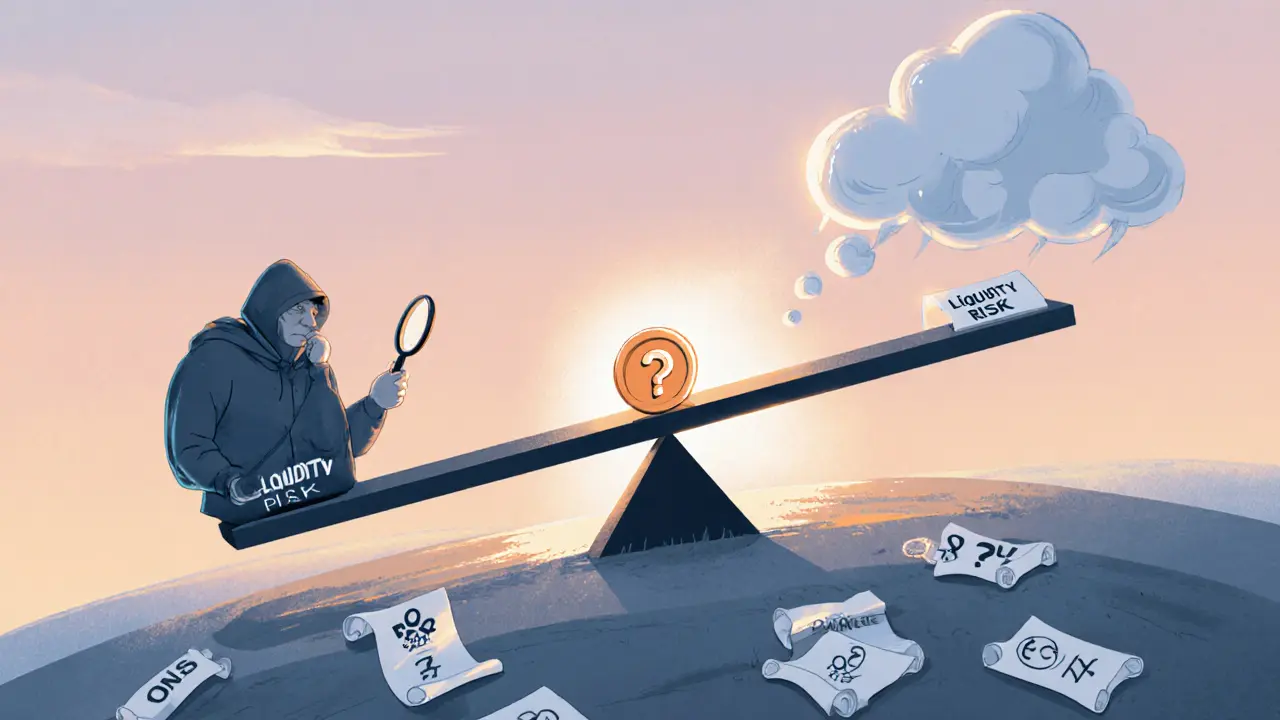
Risks and Red Flags
- Low liquidity - large orders cause severe price impact.
- Inconsistent price data across platforms makes reliable valuation difficult.
- Opaque tokenomics: circulating supply and inflation schedule are not disclosed.
- Limited exchange coverage - only Gate.io shows meaningful activity.
- Potential data inaccuracies - historical price figures differ dramatically between trackers.
- Ethereum gas fees can add a noticeable cost, especially during network spikes.
If you’re considering a position, treat ONS like a speculative micro‑cap token: allocate only what you can afford to lose and be prepared for sudden price swings.
Quick Takeaway Checklist
- ONS is an ERC‑20 token on Ethereum (contract 0x5B…2c5).
- Main trading venue: Gate.io (≈99% of volume).
- Liquidity is extremely thin - expect high slippage.
- Supply data is unclear; market cap estimates revolve around $100K.
- Governance and utility details are not publicly documented.
- Buy via Gate.io for ease, or Uniswap V2 for custody, but watch gas and slippage.
Frequently Asked Questions
What blockchain does One Share (ONS) run on?
ONS is an ERC‑20 token that lives on the Ethereum blockchain. All transactions are recorded on Ethereum’s public ledger and require ETH for gas fees.
Where can I buy ONS?
The most liquid option is Gate.io, which hosts the ONS/USDT pair. For a non‑custodial route you can use Uniswap V2, but expect very low liquidity and higher gas costs.
What is the current price of ONS?
Price varies by exchange: roughly $1.04 on CoinGecko, about $0.83 on Coinbase, and between $0.83‑$0.96 on Binance. Low volume means prices can shift quickly.
Is there a clear supply number for ONS?
Coinbase lists a circulating supply of 100,000 ONS, but most other trackers do not provide a supply figure, leaving the total tokenomics ambiguous.
What are the biggest risks of holding ONS?
Key risks include extremely low liquidity, price data inconsistencies, undisclosed supply details, and a lack of transparent governance or utility. These factors can lead to high volatility and difficulty exiting a position.
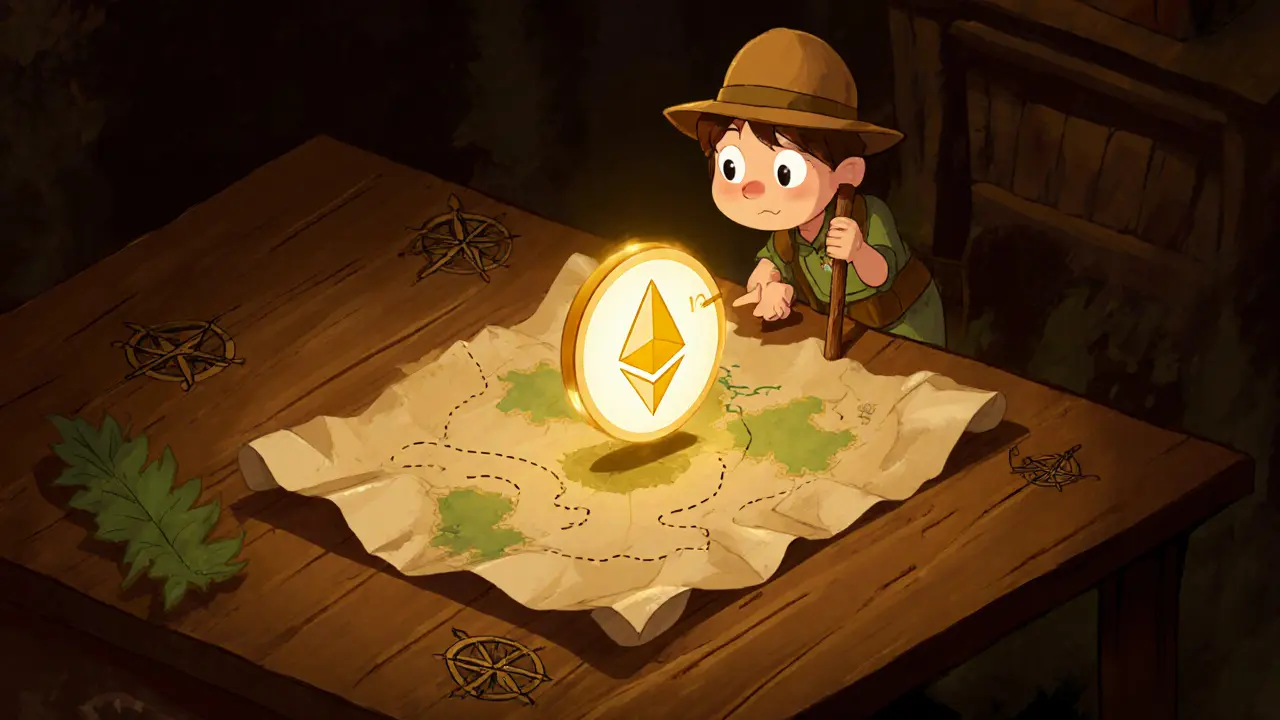
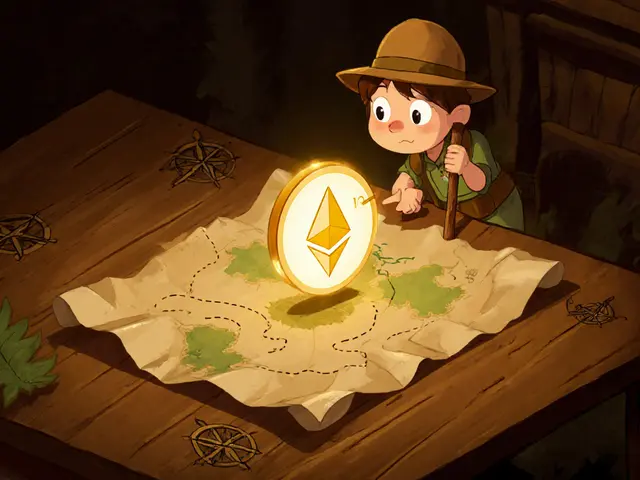
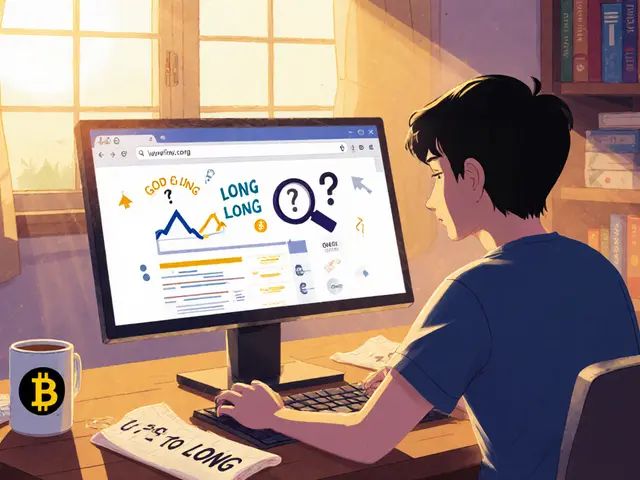
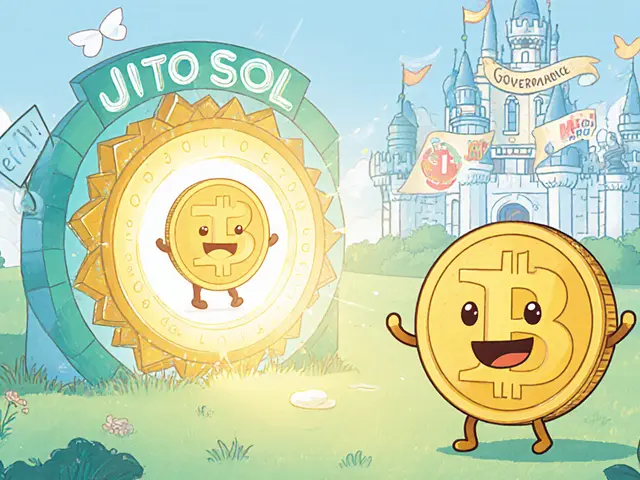


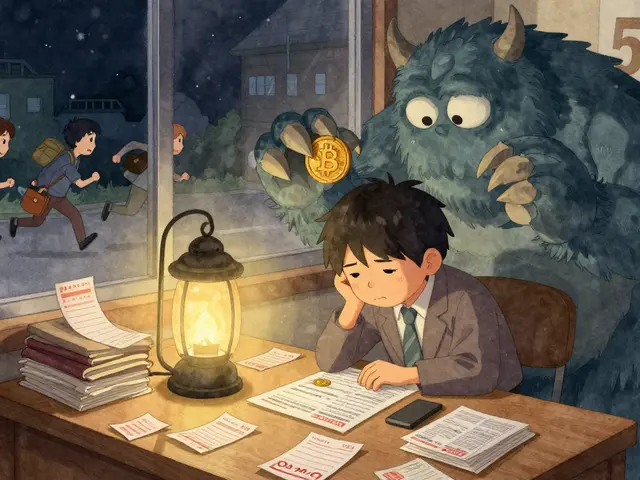


Peter Schwalm
October 10, 2025 AT 11:52ONS is one of those coins that looks like a scam but has enough real trading volume to keep people hooked. I’ve seen it bounce from $0.80 to $1.10 in under an hour on Gate.io - no news, no updates, just pure liquidity vacuum drama. If you’re thinking of dipping in, keep it under 1% of your portfolio and set a hard stop. No emotional holding.
Alex Horville
October 11, 2025 AT 07:05Why are we even talking about this trash? If you’re buying a token with no whitepaper, no team, and no roadmap - you’re not investing, you’re gambling. And if you think Uniswap is a safe way to trade this, you’ve never seen a 40% slippage on a $50 swap. Stay away.
Marianne Sivertsen
October 12, 2025 AT 06:49I read this whole thing twice. Honestly? It’s a ghost coin. The price data is all over the place because nobody’s really trading it - it’s just bots and one guy with 80K tokens sitting on his wallet. It’s like buying a house where the deed doesn’t exist and the neighbors don’t know who owns the land. Interesting, but don’t live there.
Shruti rana Rana
October 13, 2025 AT 01:07OMG this is so wild 😱 I just checked ONS on Gate.io and it’s like watching a candle flicker in a hurricane 🕯️🌪️ The price jumps like it’s dancing to Bollywood music! But seriously, if you’re new to crypto, please don’t touch this. It’s not a coin - it’s a mood. 💔✨
Stephanie Alya
October 13, 2025 AT 04:47So let me get this straight… you’re telling me this ‘governance token’ has no voting portal, no staking, no utility, and 100K supply that might not even be real? And we’re supposed to be impressed? 🤡 Welcome to crypto, where the only thing more volatile than the price is the honesty.
olufunmi ajibade
October 13, 2025 AT 19:16People keep acting like this is some deep DeFi project. It’s not. It’s a liquidity trap dressed up with ERC-20 jargon. I’ve traded micro-caps from Nigeria to India - this one’s the quiet kind that disappears after a pump. If you’re holding ONS, you’re not a believer. You’re a ghost in the machine.
Manish Gupta
October 14, 2025 AT 13:50Why does Gate.io have 99% of volume? Is it because they’re legit or because no one else wants it? I checked the contract - no mint function, no burn, no admin keys visible. That’s either genius or lazy. Either way, don’t trust it.
Gabrielle Loeser
October 15, 2025 AT 00:29While the technical breakdown is accurate, I would urge readers to consider the broader implications of investing in tokens with opaque governance structures. The absence of transparency is not merely inconvenient - it is a systemic risk. Proceed with extreme caution.
Cyndy Mcquiston
October 15, 2025 AT 13:43Just buy ETH and chill
Abby Gonzales Hoffman
October 16, 2025 AT 04:14Look, I get it - micro-caps are tempting. But ONS? It’s like buying a lottery ticket that doesn’t even say how many tickets were printed. If you want exposure to DeFi, go for something with actual users, like Aave or Compound. This? It’s a ghost story with a blockchain.
Rampraveen Rani
October 16, 2025 AT 21:02ONS is the real MVP of pump and dumps 😎 I saw it go from 0.6 to 2.1 in 3 hours last month - no reason, no news, just vibes. But man, when it drops? Oof. I lost my lunch money on this one. Still love it tho 💪🔥
ashish ramani
October 17, 2025 AT 10:04The data presented here is factual and well-structured. However, the lack of verified information regarding token supply and governance renders any investment decision speculative. I recommend avoiding exposure to such assets.
Natasha Nelson
October 18, 2025 AT 05:57Okay, so… the price is all over the place… the supply is unknown… the utility is vague… and you’re still thinking about buying it? Why? Why? Why? You’re not investing - you’re just hoping. And hoping doesn’t pay bills. 🙃
Sarah Hannay
October 18, 2025 AT 15:41While the risks outlined are substantial and appropriately emphasized, I would add that the psychological appeal of such tokens often stems from a desire to participate in decentralized innovation - even when the structure is fundamentally flawed. This cognitive dissonance is a critical factor in retail crypto behavior and deserves more attention in educational materials.
Richard Williams
October 18, 2025 AT 18:00For anyone reading this and thinking, ‘I’ll just put in $50 and see what happens’ - go ahead. But treat it like a coffee. Buy it, sip it, enjoy the moment, then let it go. Don’t watch the chart. Don’t check your wallet. Don’t tell your friends. And if it goes to zero? You didn’t lose much. You just learned something.